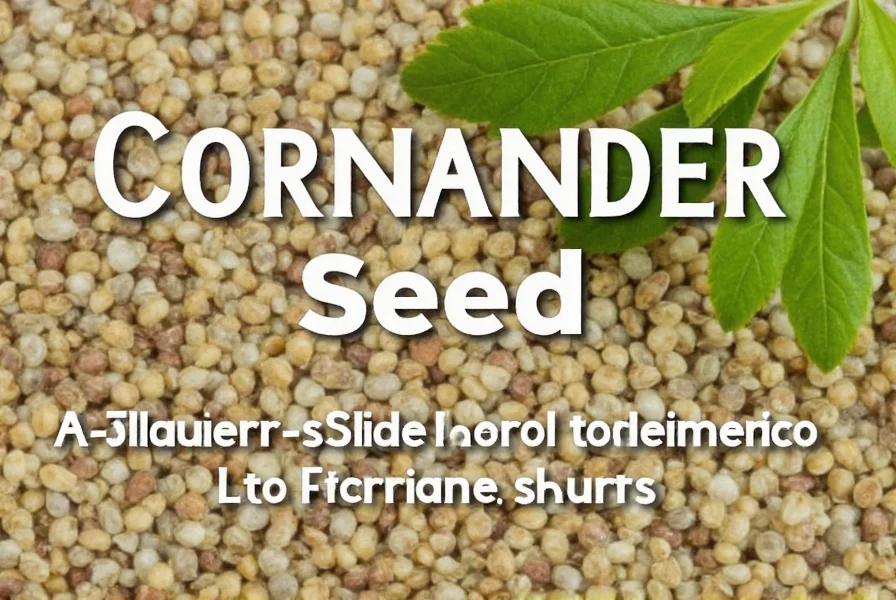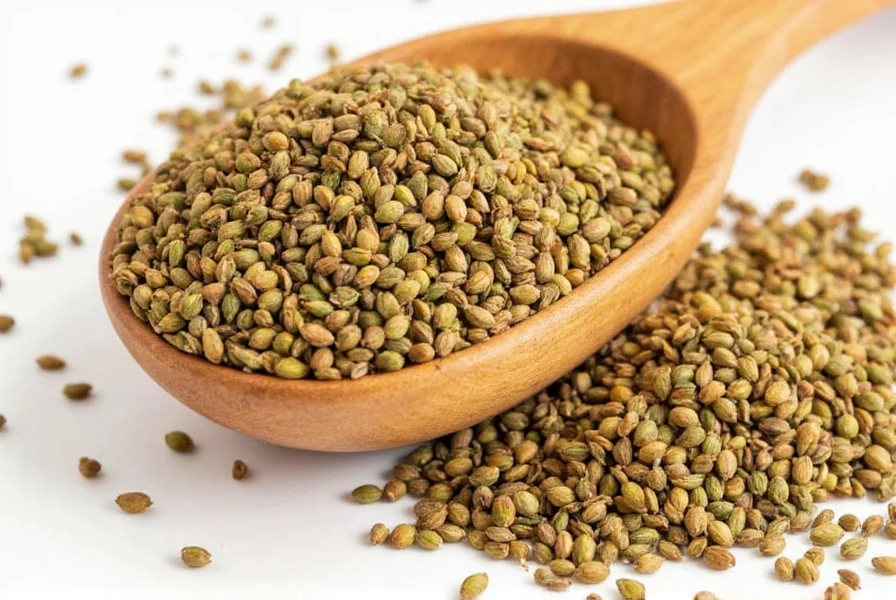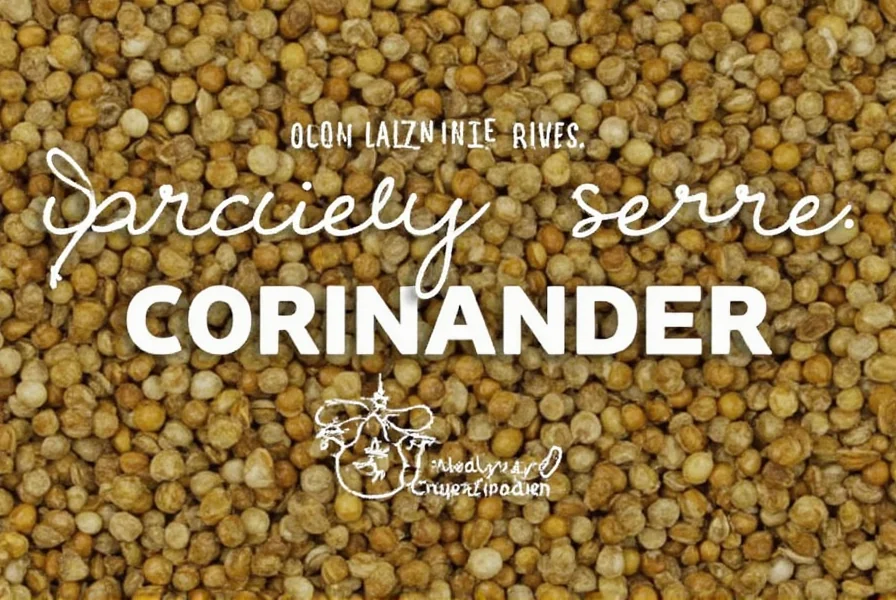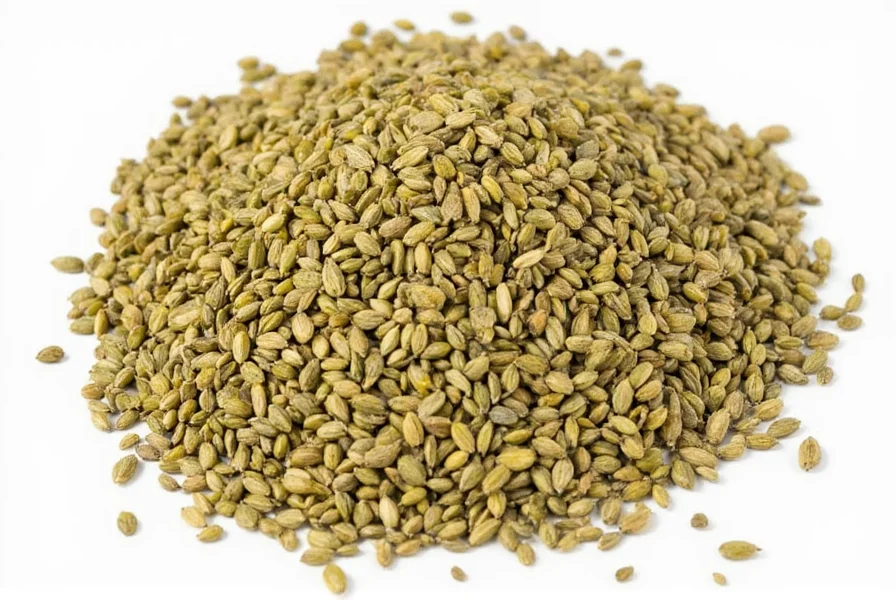Table of Contents
Coriander seeds are small, oval-shaped, light brown to yellowish seeds with a distinct citrusy aroma and nutty flavor. They're commonly used in global cuisines from Indian curries to Middle Eastern za'atar blends. This guide explains exactly what coriander seeds look like, how to identify them, and how to use them effectively in your cooking.
What Does a Coriander Seed Look Like?
Coriander seeds are small, oval-shaped seeds measuring 3-5 mm in length. They have a slightly ridged surface and range in color from pale yellow to deep brown. When fresh, they appear slightly translucent, but as they age, they become more opaque. The seeds develop from the dried fruits of the coriander plant (Coriandrum sativum) after its small white flowers fade.

Unlike cumin or caraway seeds, coriander seeds have a smooth, rounded shape with a subtle curve. The surface texture is distinctive with fine ridges that run lengthwise along the seed. When held up to light, fresh coriander seeds have a slight sheen.

How to Identify Coriander Seeds
| Spice | Appearance | Flavor Profile |
|---|---|---|
| Coriander Seed | Small, oval, light brown or yellowish, smooth surface with fine ridges | Citrusy, slightly sweet, nutty |
| Cumin Seed | Longer, more pointed, darker brown, more pronounced ridges | Earthier, smoky, with a stronger aroma |
| Caraway Seed | Longer, slender, curved with a slight forked tip, darker brown | Similar to anise or fennel, with a licorice-like taste |
Coriander seeds have a unique citrusy aroma when crushed between your fingers. If you're unsure, rub a seed between your fingers - authentic coriander seeds release a fresh, lemony scent that distinguishes them from similar spices.
Coriander Seeds in the Kitchen
Coriander seeds are one of the most versatile spices worldwide. They add a warm, citrusy note to dishes and are essential in:
- Indian cuisine: Used in curries, dals, and spice blends like garam masala
- Middle Eastern cooking: Key ingredient in za'atar blends
- European cuisine: Used in sausages, breads, and traditional beers
- Mexican dishes: Common in mole sauces and salsas
- North African tagines and stews
Whole seeds are often toasted before use to enhance their flavor, while ground coriander is commonly used in spice rubs and marinades. The seeds can be used in both sweet and savory applications, making them incredibly versatile.

Buying Guide
When purchasing coriander seeds, look for these quality indicators:
- Freshness: Bright color, strong citrusy aroma, no signs of mold or moisture
- Origin: Indian coriander is typically considered the most flavorful, though Mexican and North African varieties are also excellent
- Whole vs. Ground: Whole seeds retain flavor longer - grind only what you need for optimal freshness
- Packaging: Look for airtight containers with a roast date (if available)
For the best quality, choose organic coriander seeds that are cold-pressed and non-GMO. These maintain maximum flavor and aroma for your culinary creations.
Practical Tips for Using Coriander Seeds
- Toasting: Toast seeds in a dry pan over medium heat for 2-3 minutes until fragrant. This enhances their flavor and releases essential oils.
- Grinding: Use a mortar and pestle or spice grinder for fresh ground coriander. Store in an airtight container away from light.
- Pairing: Coriander seeds complement turmeric, cumin, garlic, ginger, and chili peppers. They also pair well with meats, vegetables, and even fruit-based desserts.
- Storage: Keep in an airtight container in a cool, dark place. Properly stored seeds maintain quality for up to 12 months.
Frequently Asked Questions
What's the difference between coriander seeds and cilantro?
Coriander seeds come from the dried fruit of the cilantro plant (Coriandrum sativum). Cilantro refers to the fresh leaves and stems, while coriander seeds are the mature, dried seeds. They have completely different flavor profiles - cilantro is bright and citrusy, while the seeds are warm, nutty, and subtly citrusy.
Can I substitute ground coriander for whole seeds?
Yes, but with adjustments. Use 3/4 teaspoon of ground coriander for every 1 teaspoon of whole seeds called for in a recipe. Note that ground coriander has a more immediate flavor release while whole seeds provide gradual flavor infusion during cooking.
Why do my coriander seeds taste bitter?
Bitterness usually occurs when seeds are over-toasted. Toast them only until fragrant (about 2-3 minutes on medium heat), as they continue cooking from residual heat after removal from the pan. Old or stale seeds can also develop bitter notes.
How can I tell if my coriander seeds have gone bad?
Stale seeds lose their citrusy aroma and develop a musty smell. Visually, they may appear excessively dry or cracked. For optimal flavor, use within 6 months of opening, though properly stored seeds remain safe indefinitely.
Are coriander seeds healthy?
Yes, they're rich in antioxidants, dietary fiber, and minerals like iron and magnesium. Studies suggest potential benefits for digestion, blood sugar regulation, and inflammation reduction. Always consult a healthcare provider for medical advice.
Can I grow coriander from store-bought seeds?
Most commercially sold coriander seeds are heat-treated and won't germinate. For growing, seek untreated, organic coriander seeds labeled for planting. Plant them directly in well-draining soil after the last frost.
Conclusion
Coriander seeds are small, oval-shaped seeds with a distinctive citrusy aroma and nutty flavor. They're easily identified by their smooth surface with fine ridges and light brown to yellowish color. Understanding what coriander seeds look like and how to use them properly can elevate your cooking significantly. Whether you're using them whole or ground, coriander seeds bring unique depth to any dish. Next time you're in the spice aisle, take a moment to examine the seeds - their appearance and aroma will help you select the best quality for your culinary creations.











 浙公网安备
33010002000092号
浙公网安备
33010002000092号 浙B2-20120091-4
浙B2-20120091-4